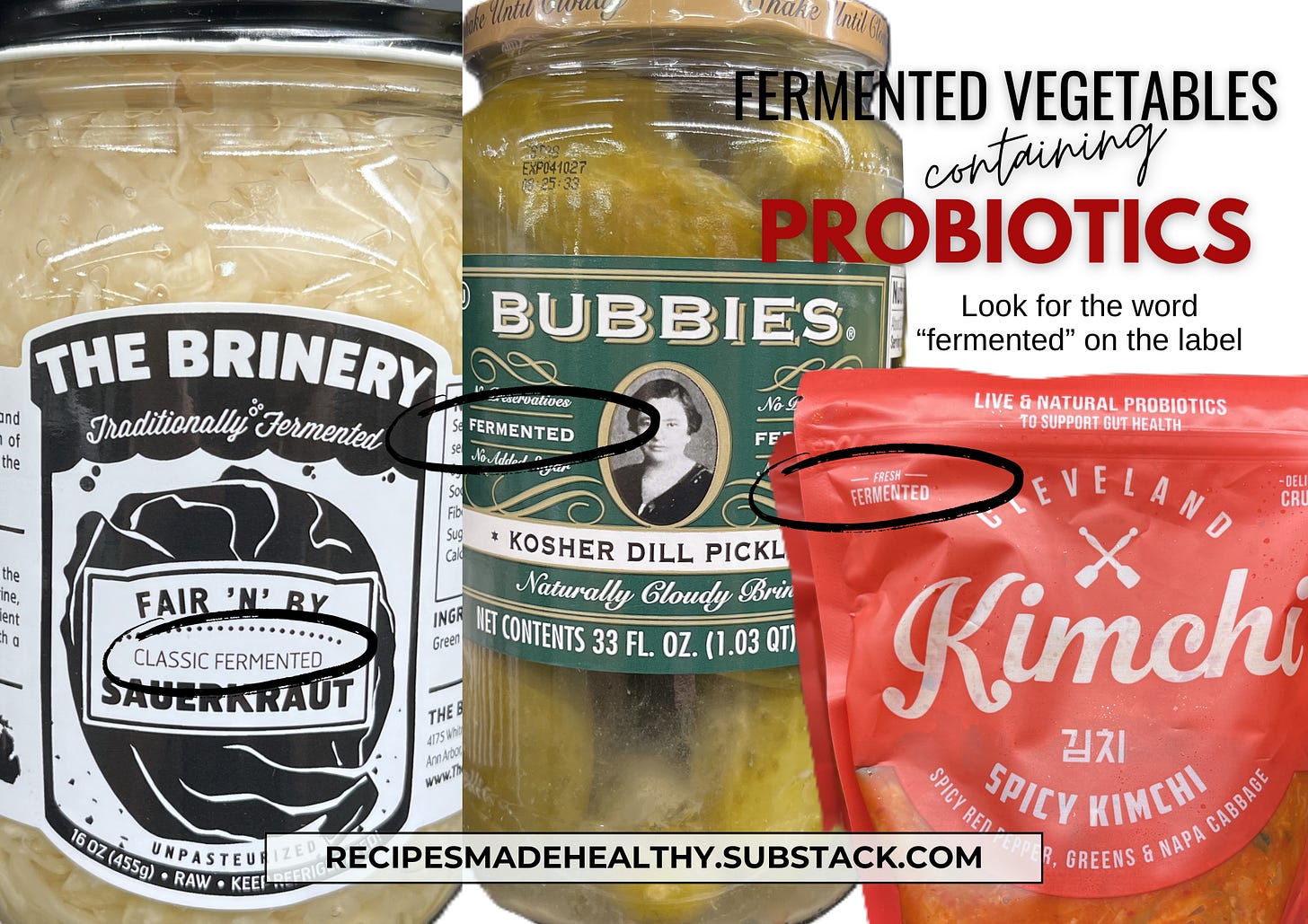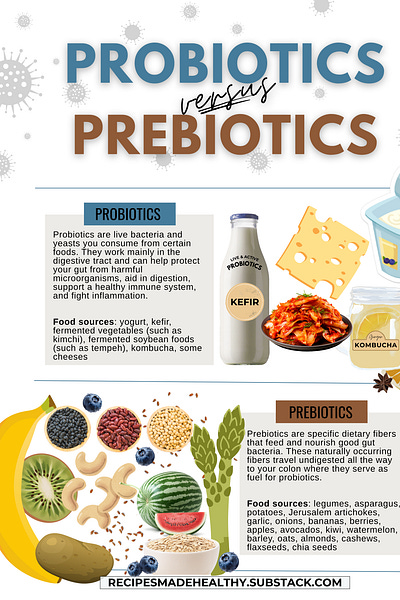So Simple Three Bean Salad
A classic summer potluck salad that couldn’t be easier to make. A trio of fiber-packed beans, along with green pepper and onion are tossed in a sweet and sour dressing. So simple, so good!
One of the most fascinating areas of research in the nutrition and health world (at least in my opinion) is how our gut impacts our well-being. Researchers are learning that a well-functioning intestinal tract has a profound effect on overall health. In fact, some studies suggest that the health of the gut may influence the risk of chronic diseases such as type 2 diabetes, obesity, and heart disease. It may also impact immune function and how the body responds to illness and inflammation. Scientists are even studying how gut health might influence mood, anxiety, depression, and energy levels.
At the center of the gut health conversation is the human microbiome. The microbiome refers to the trillions of microorganisms that live in and on the human body. These microorganisms include bacteria, yeasts, viruses, and other microbes (both good and bad), that can influence our health. This enormous collection of microorganisms is most densely populated in the intestinal tract and is often referred to as the gut microbiome. While many things affect the makeup of our gut microbiome, the foods we eat every day have a significant impact. The best way to enhance and support a healthy gut microbiome is by including gut-friendly probiotic and prebiotic foods in our daily diet. Let’s take a look at what probiotics and prebiotics actually are and which foods provide the best sources.
What are Probiotics?
Probiotics are live bacteria and yeasts that can enhance your health when you consume them. They work mainly in the digestive tract and can help protect your gut from harmful microorganisms, aid in digestion, and provide other health benefits as well.
Food Sources of Probiotics
Probiotics are naturally present in certain fermented foods. It’s important to know that probiotics are sensitive to heat, meaning high temperatures can reduce or even destroy them. To help preserve these good bacteria, enjoy probiotic-rich foods raw or only slightly heated. Probiotic-rich foods include:
Yogurt: Greek and traditional. Be sure to look for the words “live and active cultures” on yogurt labels to make sure you’re getting probiotics.
Kefir: a yogurt-like drink with a slightly tart, acidic taste. When purchasing kefir, look for the words “live and active probiotics” or “live and active cultures.”
Fermented vegetables: sauerkraut, kimchi, and pickles. Look for these fermented vegetables in the refrigerated section of the grocery store. Those containing probiotics will have the word “fermented” on the label. If you haven’t had these fermented vegetables before, their smell and taste can be quite strong and rather unpleasant for some people.
Fermented soybean foods: tempeh, miso, and natto
Kombucha: a tart, fizzy fermented drink typically made with green or black tea. Homemade or unpasteurized kombucha is not recommended for children or women who are pregnant or breastfeeding as it can contain small amounts of alcohol.
Some cheeses: those that have been aged but not heated (pasteurized) afterward contain probiotics. Examples include provolone, Swiss, cheddar, Gruyère, Edam, Gouda, and some cottage cheese.
What are Prebiotics?
When you're trying to add more beneficial probiotic bacteria to your gut, you need to feed them something. Prebiotics are specific dietary fibers that feed and nourish good gut bacteria. These fibers have crazy names like galactooligosaccharides (GOS), fructooligosaccharides (FOS), oligofructose, chicory fiber, and inulin. Cellulose and fructans are two additional prebiotic fibers. These naturally occurring fibers travel undigested all the way to your colon where they serve as fuel for probiotics.
Food Sources of Prebiotics
While not all dietary fibers are prebiotics, all prebiotics are dietary fibers. Prebiotic-rich foods include:
Legumes: garbanzo beans (chickpeas), kidney beans, black beans, pinto beans, edamame, and lentils
Vegetables: asparagus, jicama, Jerusalem artichokes (also known as sunchokes), potatoes, chicory root, beets, fennel, green peas, snow peas, cabbage, tomatoes, corn, and leafy greens (especially dandelion greens)
Aromatic vegetables: garlic, onions, and leeks
Fruits: bananas, berries, apples, peaches, nectarines, pears, kiwifruit, watermelon, grapefruit, avocado, and pomegranate
Whole grains: barley, oats, rye, and whole wheat
Nuts and seeds: almonds, pistachios, cashews, flaxseeds, and chia seeds
When increasing your intake of probiotic and prebiotic foods, start slowly. For some people, consuming large amounts of these foods can cause temporary intestinal discomfort like bloating, gas, and constipation. Staying hydrated can help minimize the possible discomfort.
If you’re ready to add some gut-friendly foods to your diet, here’s a delicious three bean salad to get you started. This recipe features garbanzo beans, kidney beans, black beans, and onion; all prebiotic-rich foods that you and your gut are going to love.
To your health,
Darlene
Follow Recipes Made Healthy on Pinterest
Follow Recipes Made Healthy on Instagram
References:
Microbes in us and their role in human health and disease. Available at: https://www.genome.gov/news/news-release/Microbes-in-us-and-their-role-in-human-health-and-disease. Accessed on July 30, 2025.
Probiotics: Fact Sheet for Consumers. Available at: https://ods.od.nih.gov/factsheets/Probiotics-Consumer/. Accessed on July 30, 2025.
The Science of Prebiotic Foods. Available at: https://foodandmooddietitian.com. Accessed on July 30, 2025.
SO SIMPLE THREE BEAN SALAD
Yield: 9 servings
Serving Size: about 2/3 cup
Prep: 15 minutes
Ready: 20 minutes
INGREDIENTS
1 can (16 ounce) garbanzo beans, drained and rinsed
1 can (16 ounce) dark red kidney beans, drained and rinsed
1 can (15 ounce) black beans, drained and rinsed
1 cup diced green pepper
1/2 cup diced red onion
5 tablespoons distilled white vinegar or cider vinegar
1/4 cup granulated sugar
3 tablespoons neutral oil (such as avocado oil or canola oil)
3/4 teaspoon celery seed
1/2 teaspoon kosher salt
1/4 teaspoon black pepper
DIRECTIONS
Combine garbanzo beans, kidney beans, black beans, green pepper, and onion in a large bowl.
In a separate bowl, whisk together vinegar, sugar, oil, celery seed, salt, and black pepper until sugar is completely dissolved. Pour dressing over bean mixture and gently toss to combine ingredients. For best flavor, chill at least 1 hour before serving.
Nutrition Information per Serving
186 Calories, 6 g Total fat, 0 g Saturated fat, 0 g Trans fat, 0 mg Cholesterol, 242 mg Sodium, 27 g Total carbohydrate, 7 g Dietary fiber, 7.5 g Total sugars, 5 g Added sugars, 7 g Protein, 0 mcg (0%) Vitamin D, 50 mg (4%) Calcium, 1.6 mg (8%) Iron, 380 mg (8%) Potassium
© 2025 RECIPES MADE HEALTHY BY DARLENE ZIMMERMAN, MS, RD LLC








Thank you for the information on pre- and pro- biotics. Great explanation.